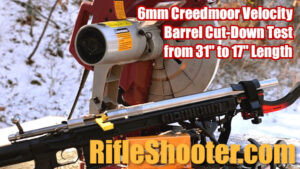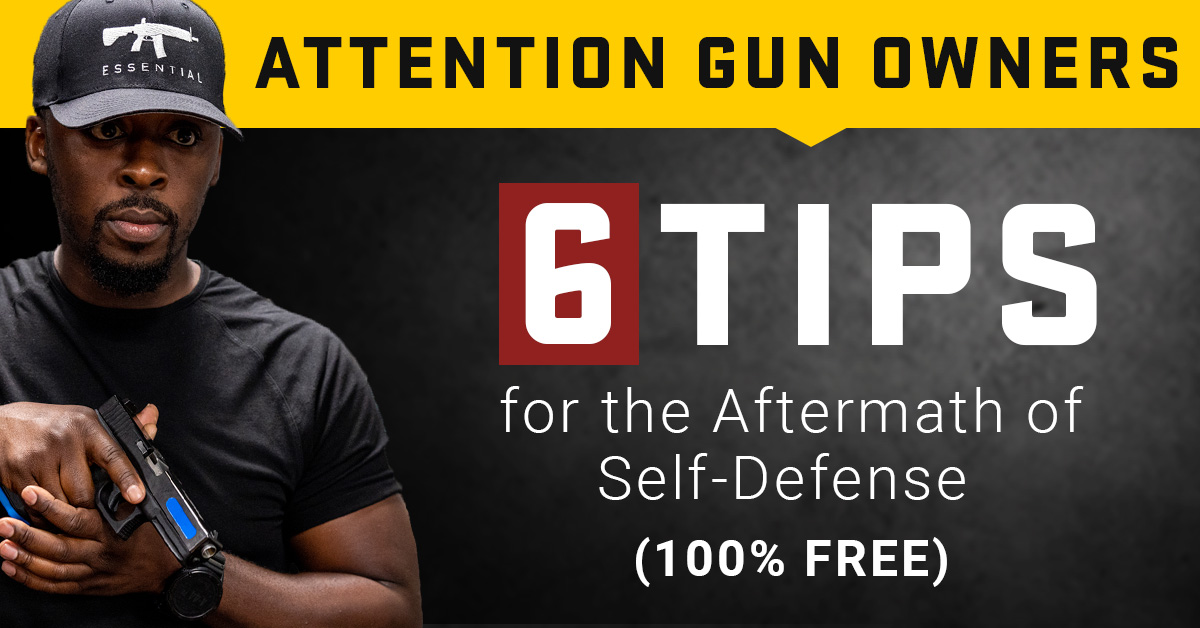We all know what happens. We all know the scenario. The owner of a new rifle is standing at the gun counter, pondering what sight to buy, when someone says, “just stick an EOTech on there.” When we hear this we think of the company’s signature 512 and XPS holographic optical systems. Models like the Vudu 1-28×28 and EFLX may make you reconsider the entire EOTech line.
The EOTech Vudu 1-28×28 and EFLX
To its detriment the name “EOTech”, has become a sort of Kleenex or Clorox in the world of shooting. It is primarily known for its best selling product. The Michigan-based company also offers a variety of other products that are made with the same quality as their best-selling product.
The Vudu line magnified optics proved that EOTech can do more than just make holographic sights. It showed that they were masters at all things optics-related.
(Photo by Alex Landeen).
A little over a year ago I had the chance to take several of these scopes out on a hunt. This experience changed my perception of the brand. The image of Tier 1 operators started to fade. The image of a Tier 1 operator started to fade.
This notion was brought home in 2022 with the introduction of the EFLX mini reflex red-dot, which may very well mark the beginning of a new line.
(Photo by Alex Landeen).
I was able to test them both at the Athlon Outdoors rendezvous in 2021. This was months before SHOT. EOTech brought EFLX and Vudu pre-mounted on weapons to the event. My experience was limited because I only got to shoot them on the guns they provided.
It was not a worst-case situation by any means. I like to be able to participate in the installation to get the whole experience. This allows me to see how new glass works. In order to do this, I requested some samples. I went straight to work when they arrived at my door.
EFLX
I was initially drawn to the EFLX because it is different. It’s not only a new class of optics for the company but also EOTech’s first true red dot optic.
Red-dots are produced by an LED. Holographics, on the other hand, use a laser or lasers to produce a 3-dimensional image. Note the differences. Each system has its pros and cons. Weight and power consumption are the main differences between dots and holos.
Red-dot is the best technology to use when building something that needs to be light to ride a slide, and stay lit for a long time so that you don’t need to worry about turning it off. It was a simple trade-off to get the Holographic sight’s true 1-MOA technology. Most pistol shooters will not be taking 500-yard shots.
The EFLX was built on the Leupold’s Delta Point Pro footprint. It’s compatible with many pistols, either through direct mounting or an adapter plate. It was no surprise that my Canik Rival came with a plate to support this configuration. I chose this plate for my host pistol.
I’d like you to know that I was able, during the extended mounting process, to give the EFLX an in-depth once-over. It took me only five minutes to strap the EFLX onto the slide.
I did have time to appreciate the top mounted battery compartment. It saves me from having to remove and re-zero the battery whenever it dies. It’s not a big deal, even though a CR 2032 battery has a 20,000-hour lifespan.
Final Thoughts about the EFLX
Overall, the EFLX was very user-friendly with clear directions for adjustment. This includes the 1 MOA/click scale, which is often a wildcard in many reflex sights. This is great because it simplifies the math at 10 yards.
The buttons were large and tactile, making them intuitive. This makes it easy to adjust and find them in the dark, if I need to change between the eight brightness levels or to the NV-compatible one.
Vudu 1-10x28mm
After mounting and packing the EFLX, it was now time to focus on the new Vudu rifle scope 1-10x28mm. These optics were previously available in a 1-8x or 1-6x version. They answered the call for marksmen who wanted low-power variable optical for platforms such as the AR-15.
I don’t think it’s fair to describe 10x as low-power. Many military snipers spent their entire careers using this same magnification.
The reticle of the new 1-10x caught my attention. In this case, SR-5 is placed into the second focal plan. This setup has a Speed Ring that is extremely large at lower power settings. Once you reach 6x, the Speed Ring disappears from your field of view.
The secondary circle dot reticle is now visible with a subtention in the form of a Christmas tree. In the glass there are 12 milliradians in elevation, with six mils either side. This is enough to accommodate any wind displacement that Mother Nature could throw your way.
For those who don’t know the DOPE chart, it takes only 9 mils for most 6.5 Creedmoor rounds to reach 1,000 yards. It only takes 12 mils to throw a.308 Winchester round to the same distance.
Dialing is optional once the zero has been achieved. The thick 34mm tube allows for 42 mils internal adjustment, which is perfect for those who prefer to run a knob. This is more than enough, even if you don’t need canted mounting hardware.
Vudu: A Detailed Look at the Vudu
The illumination was the last feature that caught my eye. This is a very important feature for anyone who plans to go hunting. This is important, especially since most shots will be taken at dawn or dusk.
The Vudu 1-10x has simple push-button controls, ten brightness levels and a 2-hour automatic shut-off. This is also powered by the common 2032 button batteries, which are available at most checkout counters today.
As I didn’t need a canted mount for this installation, I selected a pair Talley Modern Sporting Rings. I then mounted this scope on an Anderson 7.62×39 upper I had been saving for special occasions.
I thought this was appropriate, because between the cartridge and optic, this would be one helluva piggun. The rainbow trajectory of the 762×39 would be a great use of all that adjustment.
Test Day
I decided to box test each optic to make sure that the clicks are repeatable and true. I tested the EFLX at 10 yards using a box of match-grade Syntech ammo from Federal.
After zeroing out the dials, I spun them 50 clicks each way, printing a perfect square 10-inch box all around the target. I performed the same test with the 1-10x EOTech Vudu mounted on the Anderson using Freedom Munitions brass cased 7.62×39.
This test produced a box of 18 x18 inches around my central target point. This is exactly right for ten millimeters of adjustment each way.
It was time to take these two guns for a run-and-gun. I tested the EFLX against a series of steel targets designed to test sight acquisition speed.
I was blown away by how the dot appeared right in front of my eyes with very little effort, both during the target transitions and presentation. This is most likely the result of the square, enlarged window that gives the shooter more field to work with than other designs.
I tested my setup at the range next door, which had a variety targets at distances up to 500 yards. I was able to hit all of these targets using both hold-over and dialing. The scope’s subtensions were in line with what my ballistics calculator recommended. The elevation knob returned to zero each time I cranked it back down.
Breakdown
As I walked away from the field I thought about the next tasks I would like to perform with these two new opticals. I would like to put the EFLX in a USPSA match. This would be a test to see how it stands up against some of the most cruel match directors I know.
I would also like to put it through some stages of the steel challenge, just to see how this square window compares with other competitors’ optical designs.
In regards to the EOTech Vudu I was a little disappointed that I had built a piggun yet walked off the field with not a scrap of bacon or sausage. Undoubtedly, I will have to rectify this one day by taking the rifle on a hunt in the south.
For now, I would say that these two opticals illuminate more than a reticle. They show that EOTech has become a well-rounded manufacturer of all things that require aiming.
Visit EOTechInc.com for more information.
This article was originally published by Personal Defense World in the issue of June/July 2020. Subscription is available in print and digital editions at OutdoorGroupStore.com. Or call 1-800-284-5668, or email [email protected].
Continue Reading
You didn’t find the information you were looking for
Search Engine
The post Breaking the Mold – Testing the EOTech Vudu 1-28×28 and EFLX appeared initially on Personal Defense World.

















